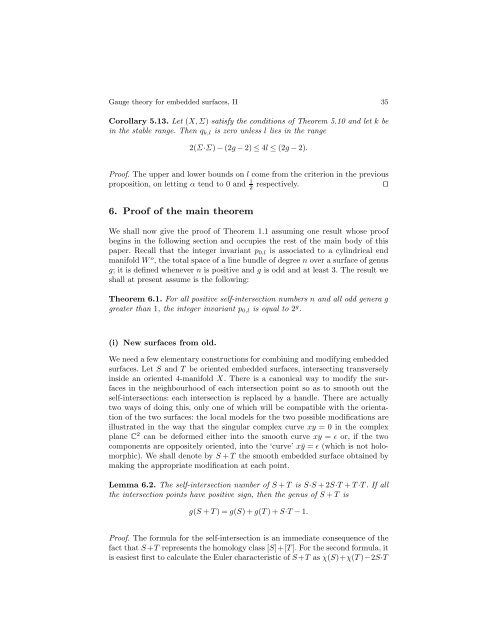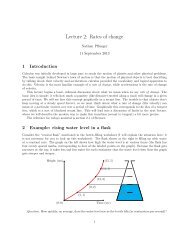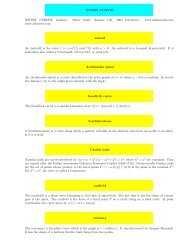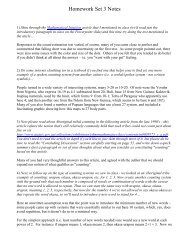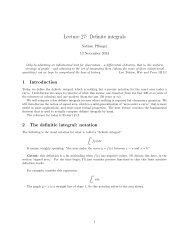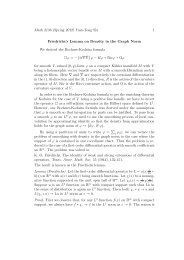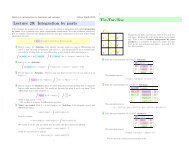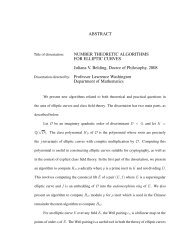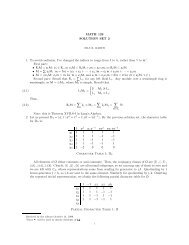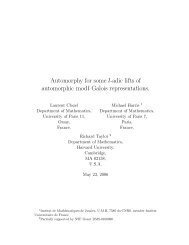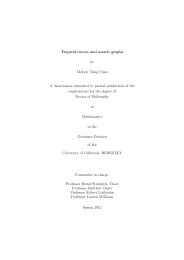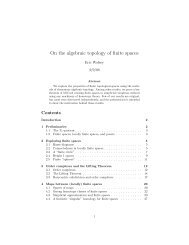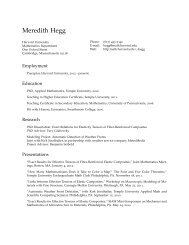Gauge theory for embedded surfaces, II
Gauge theory for embedded surfaces, II
Gauge theory for embedded surfaces, II
Create successful ePaper yourself
Turn your PDF publications into a flip-book with our unique Google optimized e-Paper software.
<strong>Gauge</strong> <strong>theory</strong> <strong>for</strong> <strong>embedded</strong> <strong>surfaces</strong>, <strong>II</strong> 35<br />
Corollary 5.13. Let (X,Σ) satisfy the conditions of Theorem 5.10 and let k be<br />
in the stable range. Then qk,l is zero unless l lies in the range<br />
2(Σ·Σ) − (2g − 2) ≤ 4l ≤ (2g − 2).<br />
Proof. The upper and lower bounds on l come from the criterion in the previous<br />
proposition, on letting α tend to 0 and 1<br />
2 respectively. ⊓⊔<br />
6. Proof of the main theorem<br />
We shall now give the proof of Theorem 1.1 assuming one result whose proof<br />
begins in the following section and occupies the rest of the main body of this<br />
paper. Recall that the integer invariant p0,l is associated to a cylindrical end<br />
manifold W o , the total space of a line bundle of degree n over a surface of genus<br />
g; it is defined whenever n is positive and g is odd and at least 3. The result we<br />
shall at present assume is the following:<br />
Theorem 6.1. For all positive self-intersection numbers n and all odd genera g<br />
greater than 1, the integer invariant p0,l is equal to 2 g .<br />
(i) New <strong>surfaces</strong> from old.<br />
We need a few elementary constructions <strong>for</strong> combining and modifying <strong>embedded</strong><br />
<strong>surfaces</strong>. Let S and T be oriented <strong>embedded</strong> <strong>surfaces</strong>, intersecting transversely<br />
inside an oriented 4-manifold X. There is a canonical way to modify the <strong>surfaces</strong><br />
in the neighbourhood of each intersection point so as to smooth out the<br />
self-intersections: each intersection is replaced by a handle. There are actually<br />
two ways of doing this, only one of which will be compatible with the orientation<br />
of the two <strong>surfaces</strong>: the local models <strong>for</strong> the two possible modifications are<br />
illustrated in the way that the singular complex curve xy = 0 in the complex<br />
plane C 2 can be de<strong>for</strong>med either into the smooth curve xy = ɛ or, if the two<br />
components are oppositely oriented, into the ‘curve’ x¯y = ɛ (which is not holomorphic).<br />
We shall denote by S + T the smooth <strong>embedded</strong> surface obtained by<br />
making the appropriate modification at each point.<br />
Lemma 6.2. The self-intersection number of S + T is S·S +2S·T+T·T.Ifall<br />
the intersection points have positive sign, then the genus of S + T is<br />
g(S + T )=g(S)+g(T)+S·T−1.<br />
Proof. The <strong>for</strong>mula <strong>for</strong> the self-intersection is an immediate consequence of the<br />
fact that S +T represents the homology class [S]+[T]. For the second <strong>for</strong>mula, it<br />
is easiest first to calculate the Euler characteristic of S +T as χ(S)+χ(T)−2S·T


